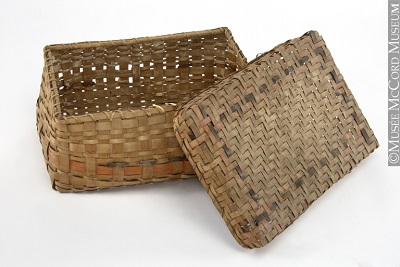Abenaki Basket-Making Industry, 1870-1920 National Historic Event
Odanak, Quebec

Abenaki basket, 1900-1925
© Musée McCord Museum / M977.94.7A-B
Address :
Odanak, Quebec
Recognition Statute:
Historic Sites and Monuments Act (R.S.C., 1985, c. H-4)
Designation Date:
2011-07-19
Other Name(s):
-
Abenaki Basket-Making Industry, 1870-1920
(Designation Name)
Research Report Number:
2010-002, 2009-021, 2009-056
Importance:
Abenakis' main source of income and livelihood for the people of Odanak and Wôlinak between 1870 and 1920
Plaque(s)
Existing plaque: 108 Waban-Aki Street, Odanak, Quebec
Made of black splints woven with sweet grass, the exquisite baskets made by the Abenaki weavers of Odanak and Wôlinak are based on traditional art, passed down through the generations. From 1870 to 1920, basketry was the main source of income in Odanak for both men and women who participated in the basket-making industry. It provided an important, stable income to family businesses and fostered economic development in the region, offsetting, in part, the loss of hunting territories at a time of increasing settlement. A symbol of Abenaki identity, this tradition of basket-making is a recognized art form in Canada and the United States.